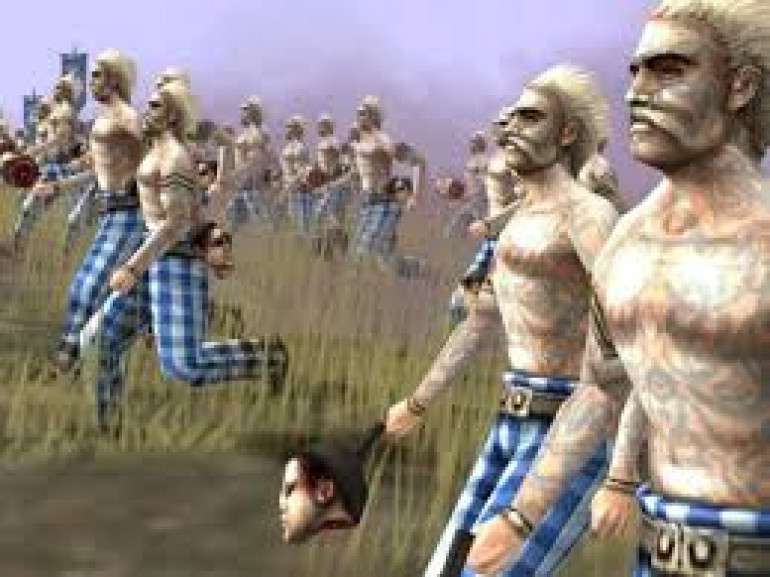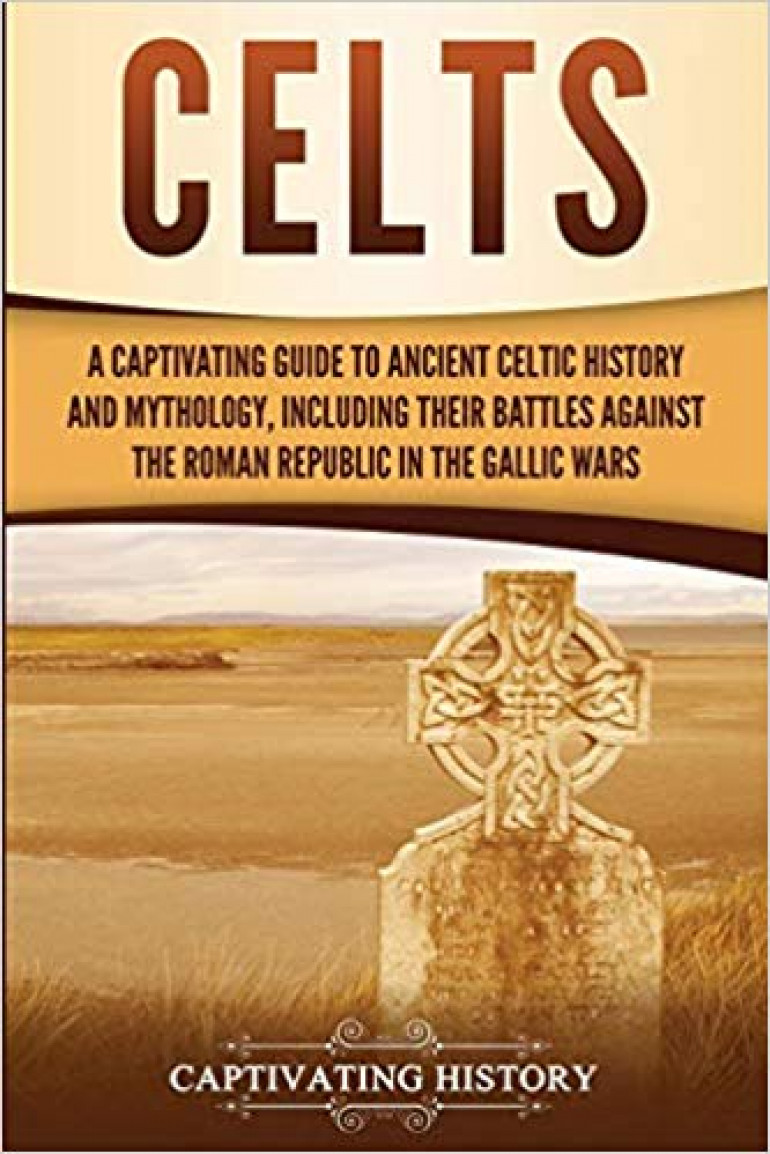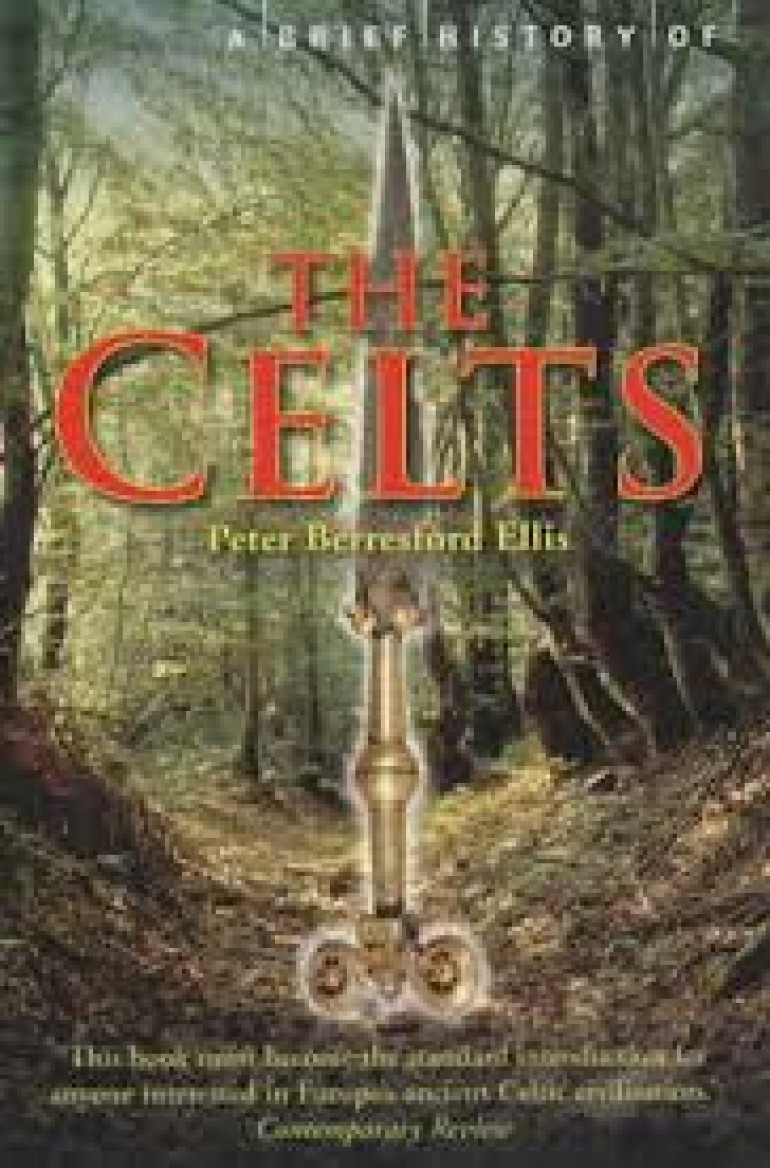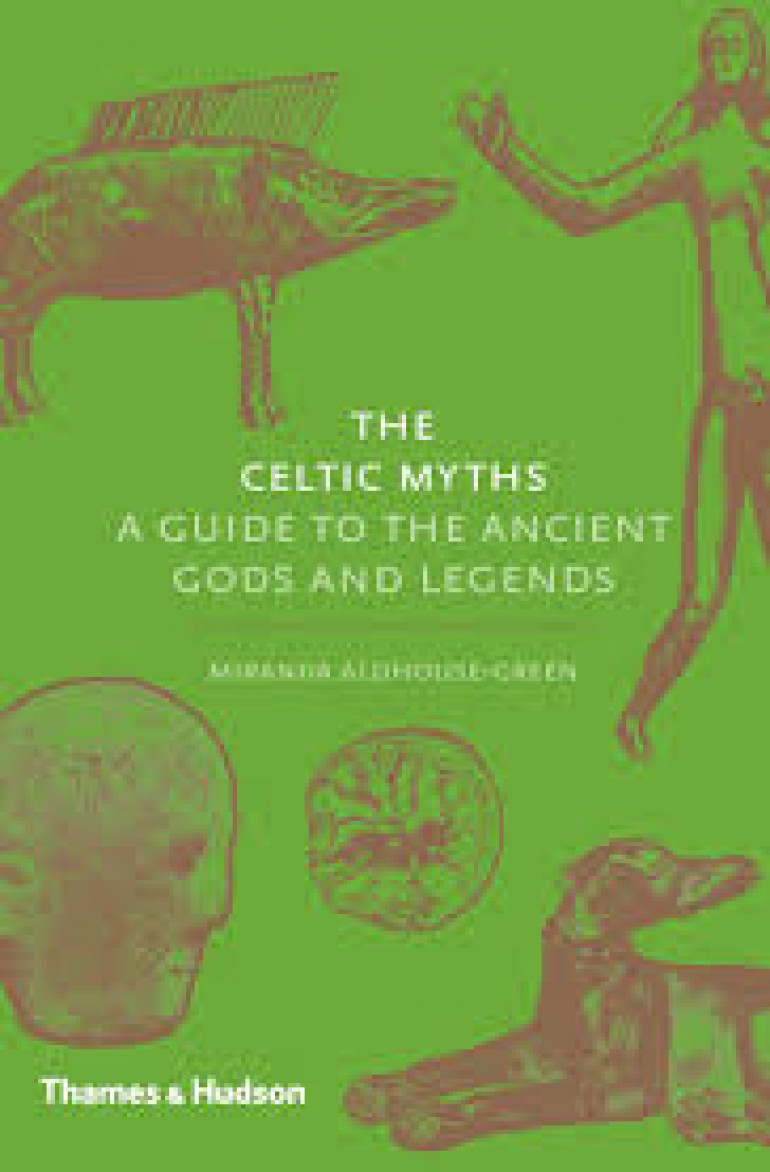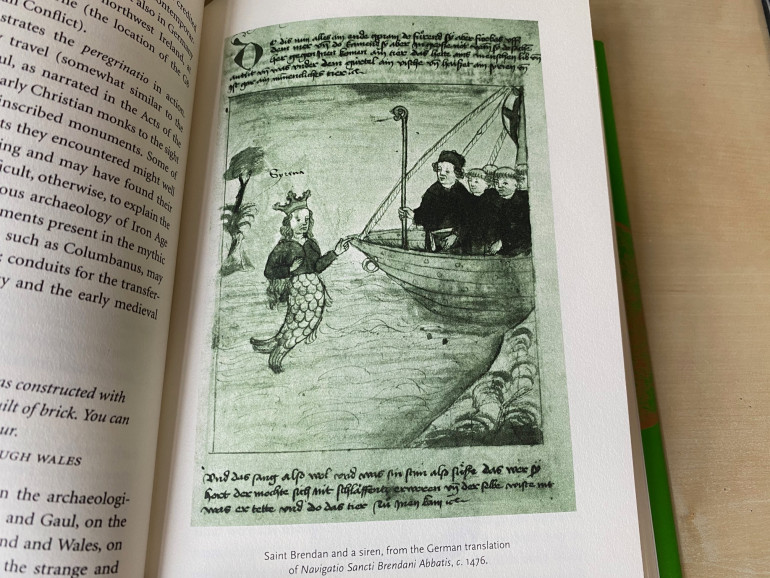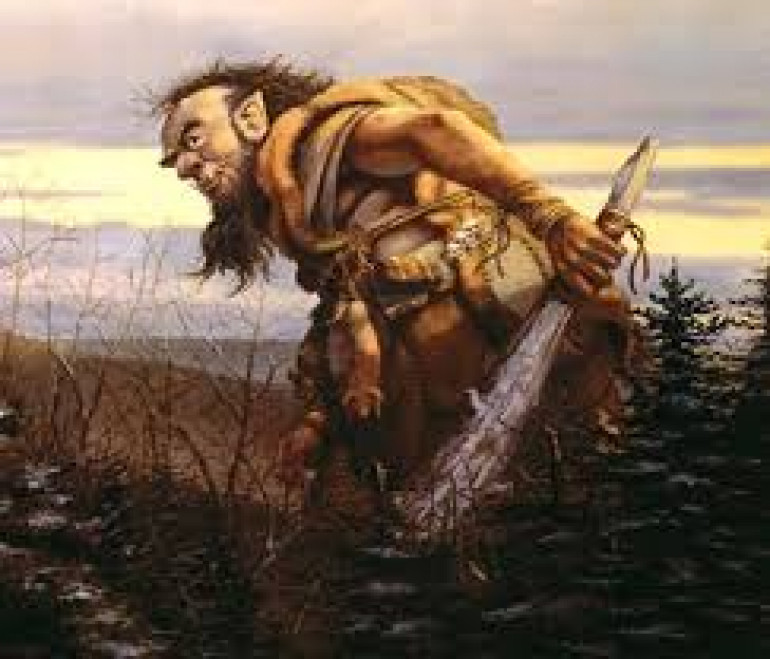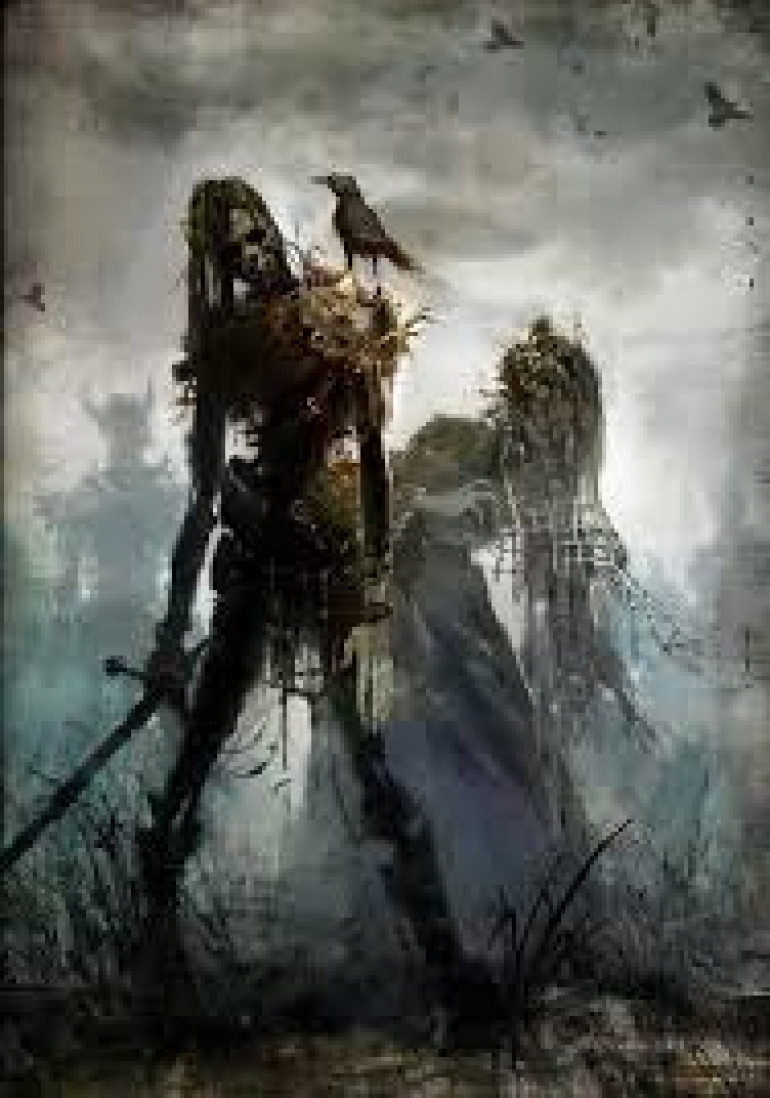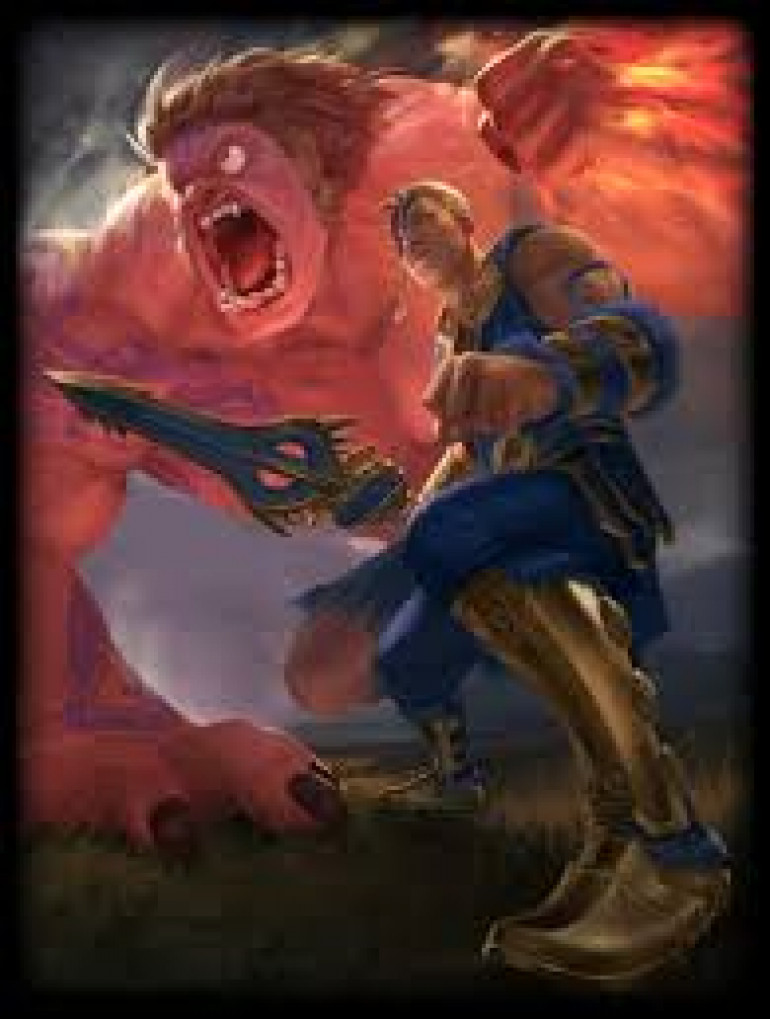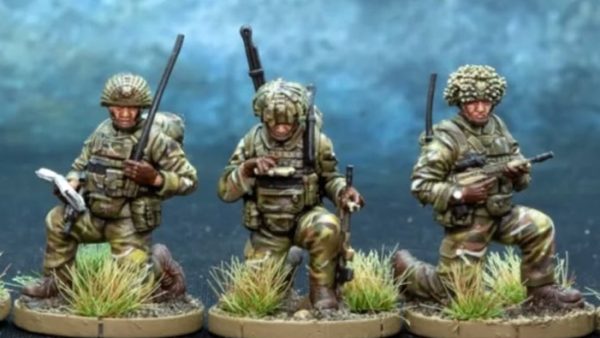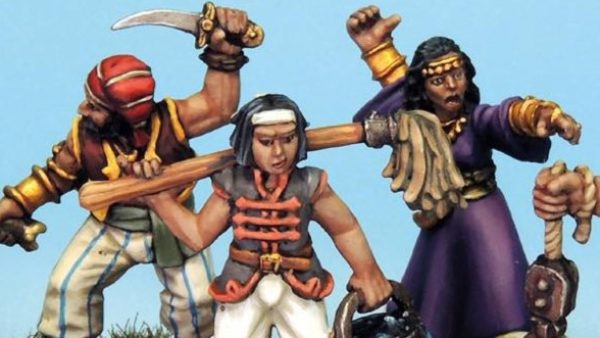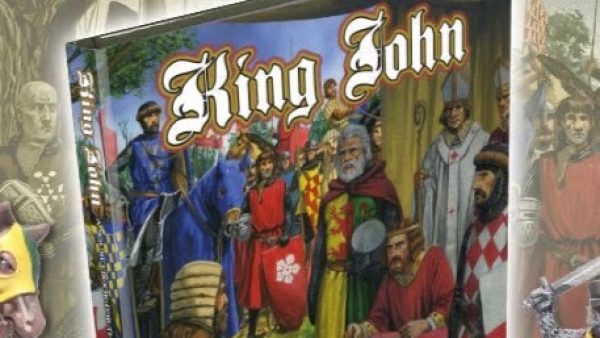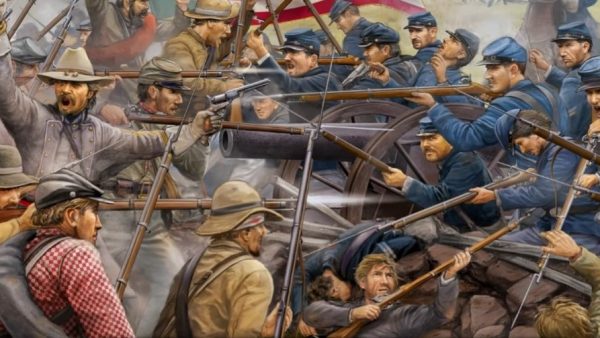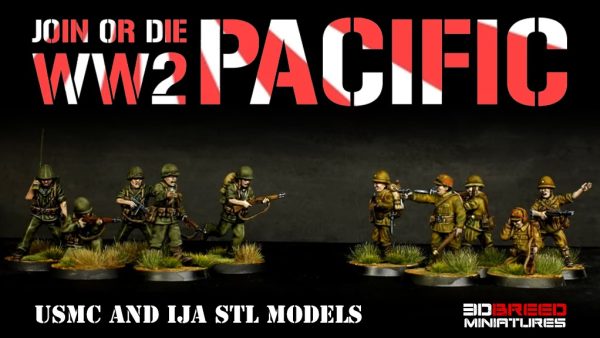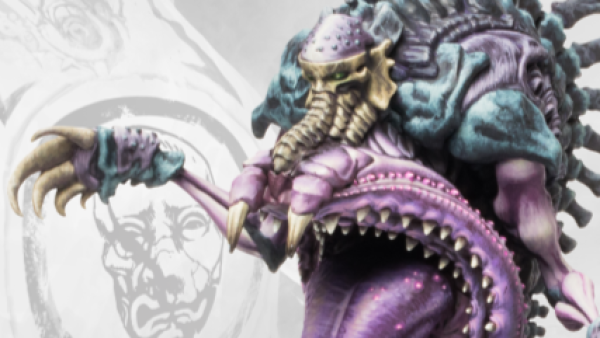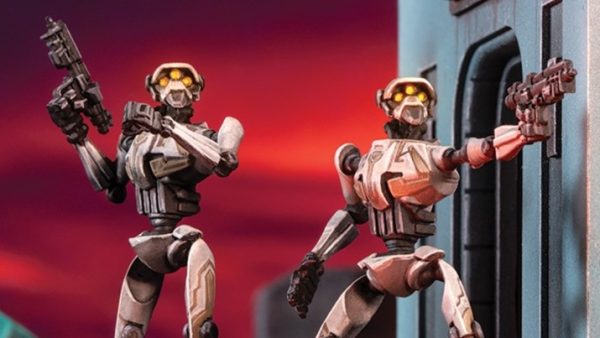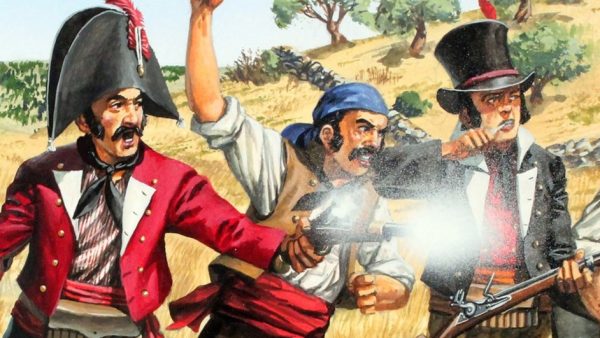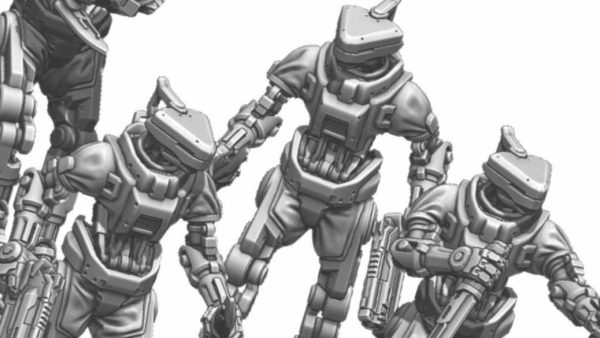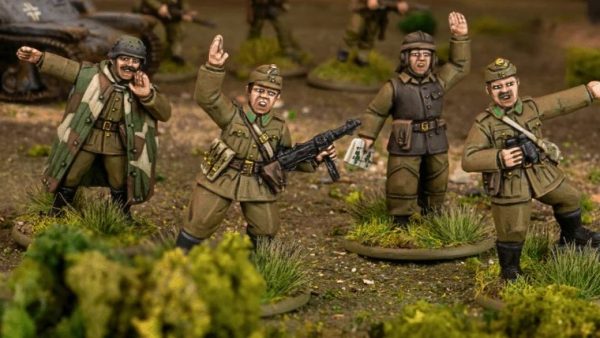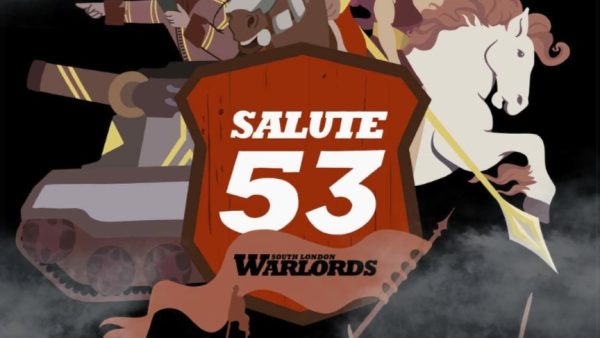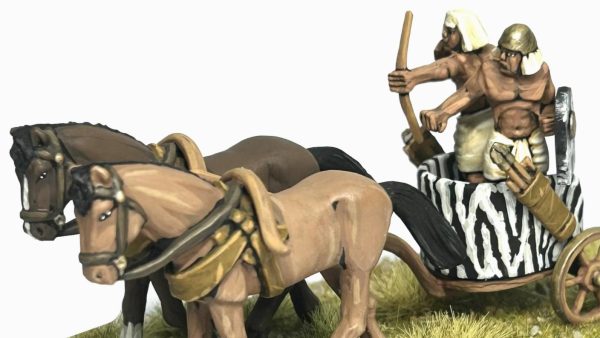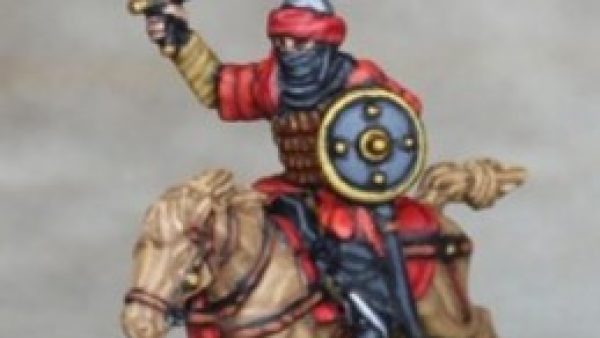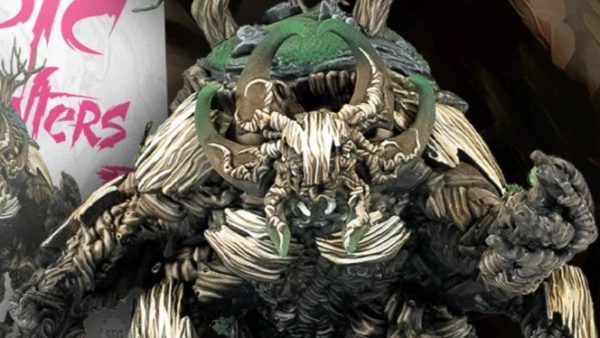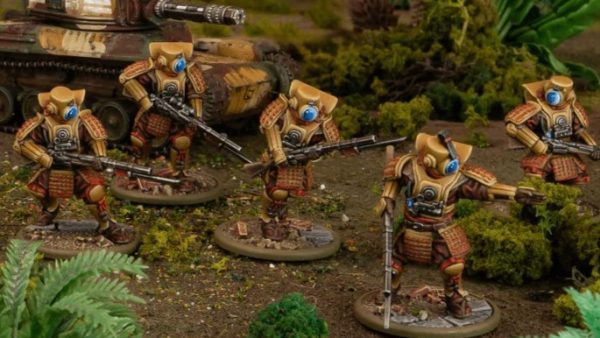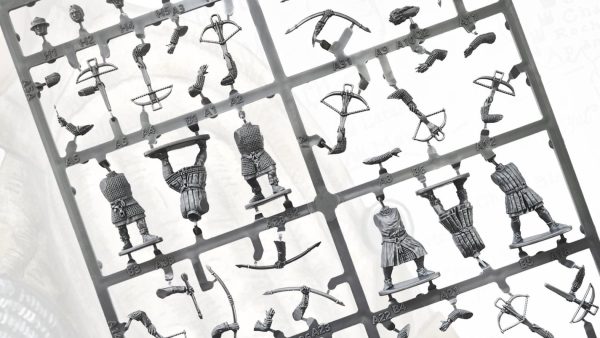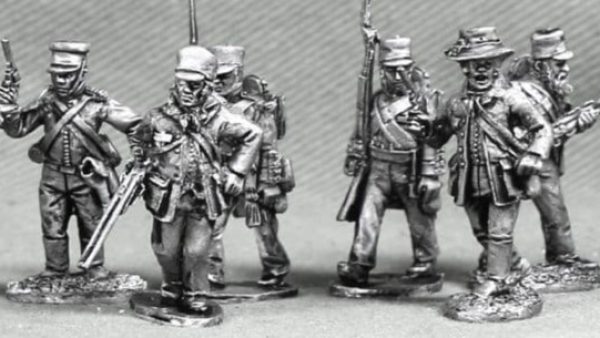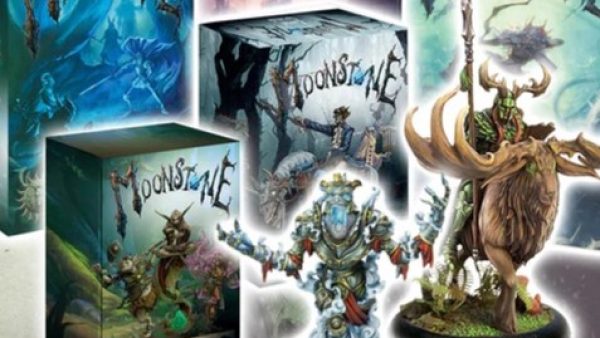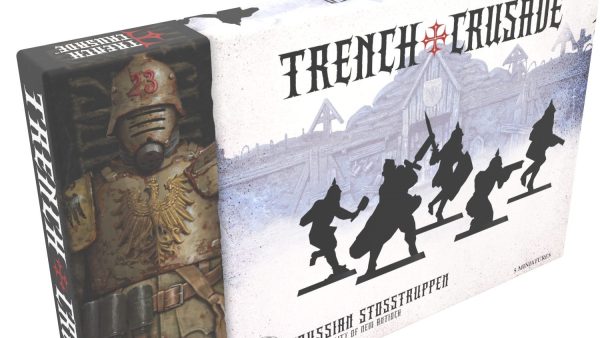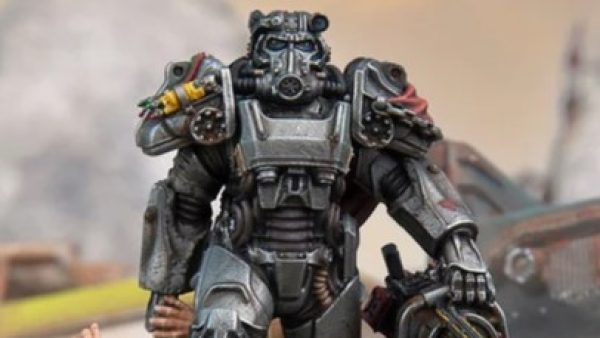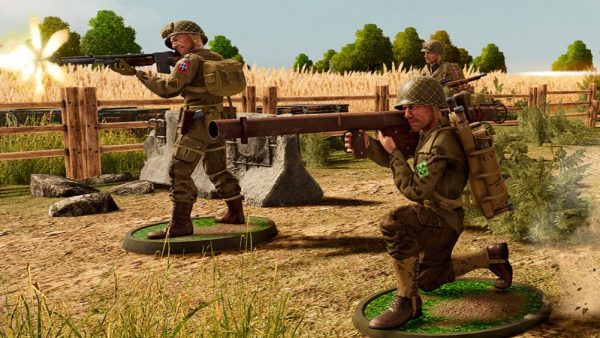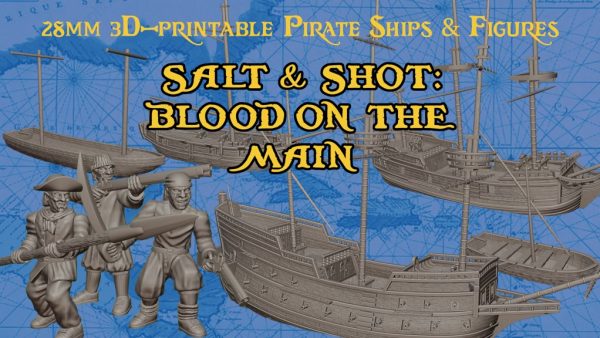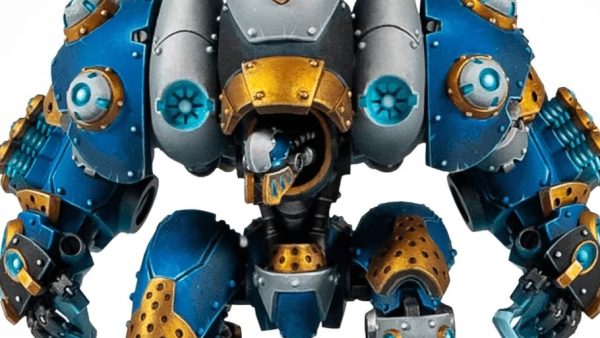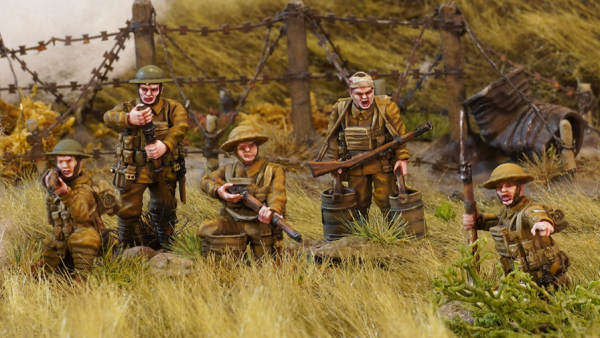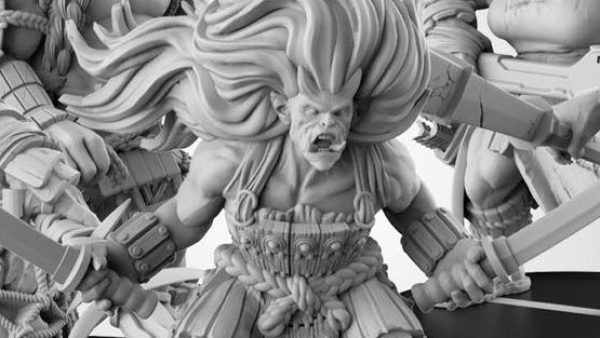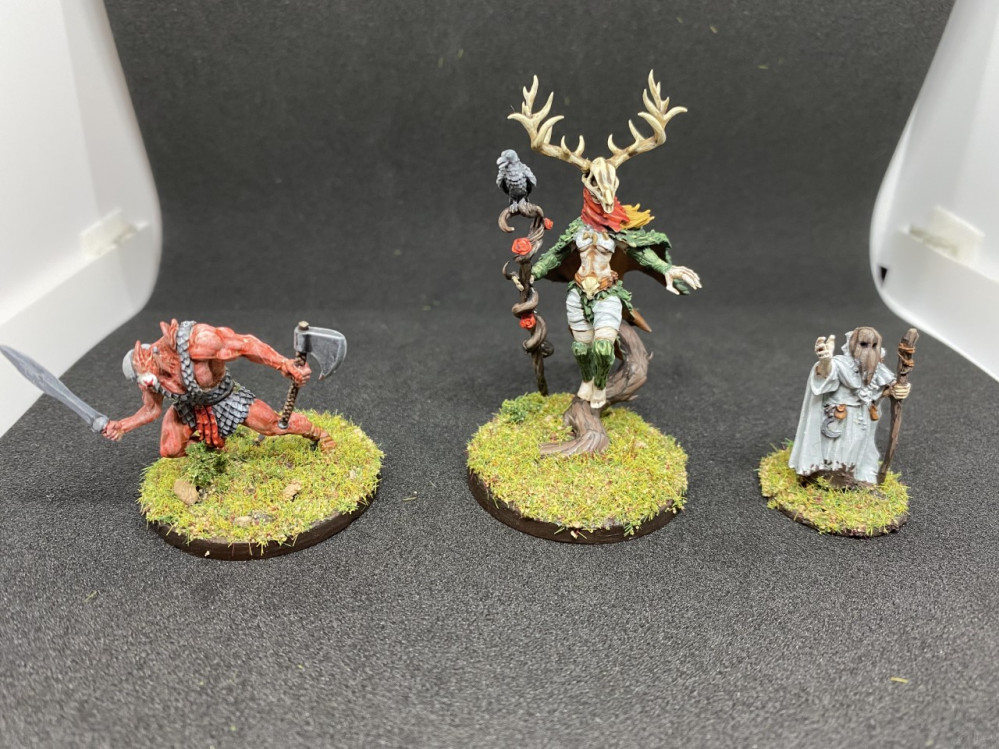
Spring Clean 2021 – Totally historically accurate fantasy Celtic army
Recommendations: 487
About the Project
Having done a lot of research into the Celts at the start of 2020, I now want to do a Celtic army with a fantasy twist, based on ancient Celt mythology.
Related Genre: Historical
Related Contest: Spring Clean Hobby Challenge (Old)
This Project is Completed
Starting point
Before starting this project the grand sum of my knowledge of Celts came from my many hours of playing Rome Total War.
- The Celts were a pre-Roman faction that covered most of Europe.
- They all wore blue and white checked trousers and were blond.
- They had druids and chariots.
- Their tech tree caps out at level 3.
I’m a strong believer in the educational power of video games but more research will be needed before I look into buying any models.
Review: Celts by Captivating History
My first foray into researching the Celts was to buy Celts by Captivating History – a book available from Amazon for about £10. At 100 pages long it promised to be a quick read that would give me a boost of Celtic knowledge.
The topics covered in the book (i.e. chapters) are: who are the Celts; the Celtic migrations; the many Celtic tribes of Europe; the Celtiberians; the Gallic wars; the Insular Celts; Celtic warriors; Celtic way of life; Celtic religion; and Celtic art.
The book gives a basic introduction to each topic, but with only about 20 pages per chapter it doesn’t have the space to go into depth.
The book itself is OK but not professional. Several images are taken from Wikipedia and are too blurry to really benefit the book, while another image was just a black box. Clearly it had not imported into the text properly and had not been picked up during the proof reading.
What I learned:
- the origins of the Celts aren’t certain as they date back so far.
- knowing about the Celts is difficult because they did not develop a written language – everything we know comes from the writings of other cultures (usually the Romans or Greeks) and from archaeology.
- they were never a unified nation or empire (in fact it was even punishable by death to try and become a high King), with most tribes being independent of each other but with many aspects of their culture in common.
- Celtic culture resolved around the upper class (i.e. warriors) raiding for luxuries which they used to pay the lower class (i.e. non-warriors) to do the menial tasks. They were also accomplished merchants – again to help them acquire luxury goods.
Review: A Brief History of the Celts by Peter Berresford Ellis
I found this by browsing the history section of my nearest Waterstones book store. It cost £8.99. The author has written several books on the Celts and is considered a leading expert on the subject.
The book is better the Celts by Captivating History all round. Peter Ellis explains where our knowledge comes from, whether it be archaeology, tracing common linguistic links, or historical texts. The book contradicts Celts by Captivating History in several places and I am inclined to believe Peter Ellis. There are many misconceptions about the Celts and Celts by Captivating History has fallen into the trap of repeating these tropes, while Peter Ellis can refer to the evidence.
The book can be a bit hard to follow at times when Peter Ellis starts reeling off lists of Celtic names or words and how they relate to words and names in other languages, but otherwise is an easy read.
The biggest think I noticed reading the book is that there is absolutely no mention of the Celts being a raiding culture. This is a misconception based on the writings of Caesar and Rome. They wanted to paint the Celts as barbarians and dangerous to justify their invasion of Celtish lands.
For each chapter I’ll now list the most interesting facts that I learned:
- 1) The origin of the Celts: in pre-history there was an Indo-European culture that formed a common route for most cultures in Europe and India. The Celts developed from this Indo-European culture and that led to many linguistic, cultural and mythological links between the Celts and Indian culture (e.g. Hindu).
- 2) An Illiterate Society?: the Celts did not write in their own language because of a religious taboo, rather than because they didn’t develop a written language. In fact it was quite common for Celts to write in either Greek or Latin.
- 3) Celtic Kings and Chieftains: these titles weren’t necessarily hereditary. The nobles would vote for replacements. There was also no restrictions on women having ruling positions. Although Kings and Chieftains could have a military role as well, this was not always the case. In some places and time periods the King had a more civil role with others acting as war leaders.
- 4) The Druids: druids were the intellectual class, charged with memorising knowledge rather than depending on written texts. The modern perception of a druid is largely false, based on Roman propaganda and modern fantasy.
- 5) Celtic Warriors: Celtic Warriors had very advanced weapons and armour (which the Romans largely copied). Their chariots and cavalry formations were regarded as very formidable. Celts often tried to resolve conflicts with a battle of champions.
- 6) Celtic Women: Celtic women in many ways were regarded as equals to men. They could be rulers and their legal system gave them equal possession rights in a marriage.
- 7) Celtic Farmers: The Celts were predominantly a rural agricultural society. The use of iron farming tools allowed them to work the land very effectively and they developed other advanced farming techniques, such as irrigation.
- 8) Celtic Physicians: the advanced medical knowledge of the druids, combined with iron tools, allowed the Celts to perform advanced surgeries. There is evidence of Celts having and surviving neuro-surgery.
- 9) Celtic Cosmology: the druids had advanced knowledge of cosmology and developed a 30 year calendar cycle based on planetary body motion. They could use this to make accurate predictions of celestial phenomena.
- 10) Celtic Road Builders: the Celts were extensive road builders and made use of wheeled vehicles such as carts and chariots. They made their roads of wood which the Romans replaced with stone. Many Roman words to do with roads were learned from the Celts.
- 11) Celtic Artists and Craftsmen: Celtish art preferred geometric shapes and it seemed to be taboo (though not totally unheard of) to make art of the human form. The Celts were very skilled with woodwork, iron, and glass. Enamelling swords with coloured glass is known to have occurred.
- 12) Celtic Architecture: the Celts usually built from wood. On the continent they could build two or three storey rectangular houses and built some very large walled cities.
- 13) Celtic Religion: this is a vague area as this was covered by the taboo of writing things down. Later writings were written by Christians who re-wrote much of it to match with Christian ideas. The Celts had many gods, a lot of which came in threes. There are many similarities with Hindu religion, and they considered rivers to be sacred.
- 14) Celtic Myth and Legend: the Celts believed the soul was immortal and resided in the head. This led them to decapitate and retain the heads of people they respected (fiend or foe). Upon death people were reborn in the Otherworld. When they died there, there they were reborn here. Celtic legends form the basis of Arthurian legend.
- 15) Early Celtic History: The Celts did sack Rome but had a very good reason to do so. A tribe of Celts migrated to Italy and asked a city for permission to settle in the area. The city asked Rome to send diplomats to resolve the issue. The Romans were rude and told the city to fight the Celts off, and the Roman joined the battle. The Celts were offended that the Romans had violated their neutral status as diplomats, so they sent an envoy to Rome to demand an apology. The Roman senate agreed, but the Roman diplomats were from a powerful family so no apology was given. In response the Celts marched across Italy to Rome and captured the city. On the way they attached no other settlements, telling each that they passed that they were at war with Rome only. Once Rome apologised and paid compensation, the Celts left.
Review: The Celtic Myths by Miranda Aldhouse-Green - Chapter 1
This was another book that I found while browsing the shelves in my local Waterstones. It cost £14.95.
Rather than read and review the entire book, I’ve decided to cover the book chapter by chapter as I read it.
This book is mainly focused on medieval Celtic myths from Wales and Ireland. This is because the Iron Age Celts left very few records for us to piece together their myths from. However there is evidence to support the theory that Iron Age mythology will have influenced medieval mythology, so studying the later mythology is going to be the best we can do.
The first chapter covers some of the key concepts in Cetlic mythology. Monsters that are a hybrid of various animals or animals and humans are common. This could provide plenty of modelling opportunities for monsters in my project.
Another recurring theme is magical cauldrons. Stories of cauldrons that can provide magical healing or even reanimate the dead feature in Celtic mythology and may be the source of various legends of healing drinks (Holy Grail?) and the stereotypical witch’s cauldron and magic potions. This is another great modelling possibility for my project.
Three was considered a holy number in Celtic mythology, with many gods having three separate incarnations. There are also archaeological findings of three faced stone heads that could have been involved in communing with spirits.
I believe I have already touched on decapitated talking heads in a previous book review. The Celts believed that the spirit lived in the head and there are several myths that involve talking decapitated heads or characters using decapitated heads.
Another interesting aspect of Celtic mythology is the prevalence of characters being placed under prohibitions and curses. This often takes the form of a character in a myth being cursed, with the curse triggering in the even that they do some prohibited action. Not really something that can be incorporated into a modelling project, but it could form the backstory for a character.
Review: The Celtic Myths - Chapter 2
This chapter mainly focused on how oral tradition eventually gave away to written myths. The Christian monks that wrote down the stories were motivated to either adapt the stories to promote Christian ideals, or as a way of mocking old Pagan beliefs. This led to the myths being changed subtly, but never the less the written stories are all we have to go on.
There were a couple of things that came up in this chapter that were interesting. Above you can see an illustration of an encounter with a siren, which looks very much like me to a mermaid. Another nugget of information is that creatures from the Otherworld are often depicted with either red or red and white colouration. This should be useful to know if I decide to paint up a creature from the Otherworld.
Review: The Celtic Myths - Chapter 3
Chapter 3 focuses on the Irish myths which retained stronger pagan elements compared to Welsh mythology.
Their creation myth (in a nutshell) was that in the beginning the land was occupied by the Fir Bholg. They were defeated by the Tuatha De Danann (the People of the Goddess Danu). These people were the gods, and in turn were invaded by the Formorians, which were giants. Their king was Balor of the Baleful Eye. His gaze had the power to kill people instantly. The Formorians were defeated, and then there was another invasion by the Gaels/Celts which the Tuatha De Danann were not able to defeat. The Tuatha De Danann retreated underground and to the Otherworld.
A common theme in other myths was love triangles. In these stories typically an old man is engaged to a young maiden who falls in love with a younger man. What I found interesting is that these stories are considered to be metaphors for sovereignty and replacing old kings with younger ones which is better for the kingdom. The older man represents the old king, the woman represents the Goddess of Sovereignty, and the younger lover represents a new potential king. These stories were told to encourage people to accept the idea of replacing older kings with younger, more lively ones.
Review: The Celtic Myths - Chapter 4
This chapter covers Welsh Celtic mythology. The Welsh mythology has been more influenced by Christianity. Most of the polytheistic gods have been relegated to Nobility, good versus evil (with good usually winning) is a stronger theme, and women tend to be relegated to secondary characters (or are the embodiment of evil). This Christian influence appears to me to have modernised a lot of the mythology away from the Iron age period that I am interested in. There are still some ideas to be gleaned though.
Recurring themes that may be of use or magical cauldrons (again), but this has now expanded to magical bowls, dishes, and drinking cups. In Welsh myth there is another cauldron that brings back the dead, but in this story they come back as mindless zombies that just fight on in the war. I was not expecting to come across Celtic Zombies but that could be an interesting modelling project.
Welsh myth may be more Christian but it has stronger elements of magic in terms of enchantments, magic staves and wands. Many characters are described as magicians. Perhaps this will allow me to go beyond just including druids?
The number three and multiples of three is again significant. Arhturian legend and the Holy Grail also comes into it, but again its too late to interest me in this project.
Review: The Celtic Myths - Chapter 5
This chapter focused on the heroes for Celtic mythology. A common theme in the stories of heroes is communal feasting and drinking, and the fact that the champion is given a place of honour along with the best piece of meat available (pork was regarded as a high grade meat).
The most interesting thing in this chapter is the story of Cu Chulainn and his warp spasms. During these spasms “the hero’s body became distorted and revolved in its skin; his hair stood on end, with a nimbus of light surrounding his head; his muscles swelled as though they would burst from his body; one eye bulged from his face while the other sank deep into the skull; his lips curled so far back that his throat was clearly visible; his great war-cry summoned up the spirits, who all howled with him and drove his enemies mad with fear.” That sounds like a very interesting conversion opportunity.





























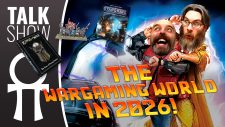

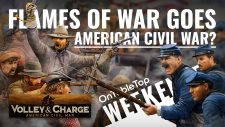
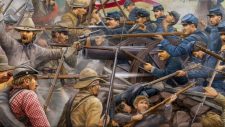

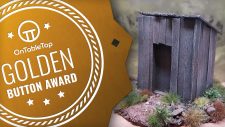

![Very Cool! Make Your Own Star Wars: Legion Imperial Agent & Officer | Review [7 Days Early Access]](https://images.beastsofwar.com/2025/12/Star-Wars-Imperial-Agent-_-Officer-coverimage-V3-225-127.jpg)




